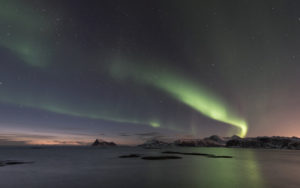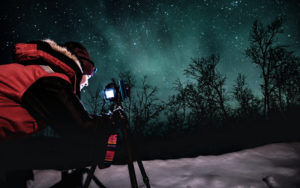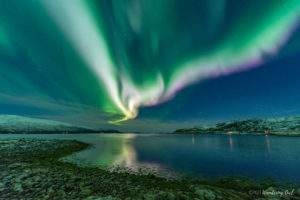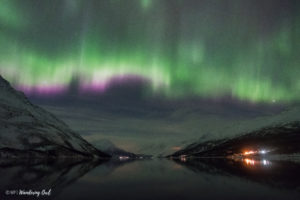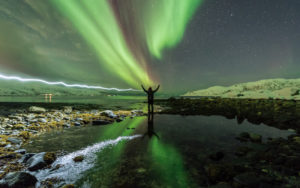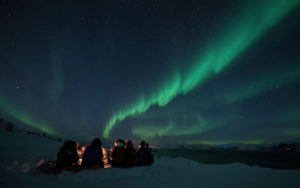Nothing beats the Northern Lights. They are otherworldly, outer this world! It’s honestly not surprising the vast number of folk stories and explanations that have been created to explain this. Yet, what are these lights exactly, and what is causing them? And of course, why do they only appear at such high latitudes? This expose on the Northern Lights, more accurately the Aurora Borealis, will endeavour to answer just those questions.
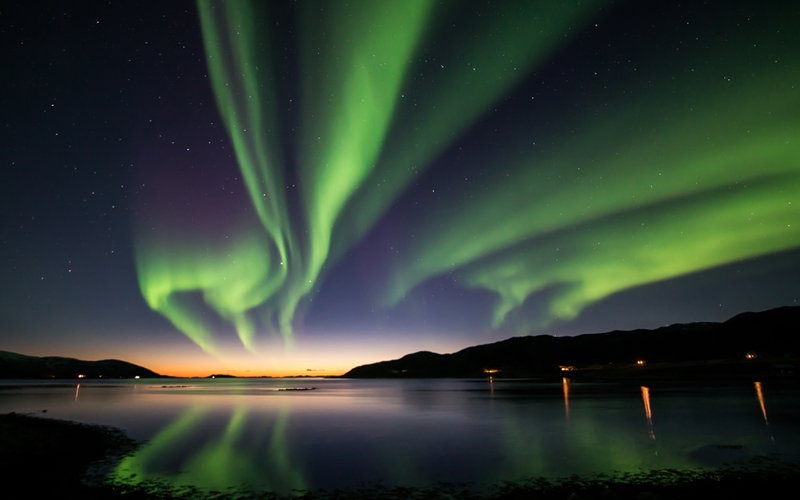
Interested in what the Aurora Borealis actually looks like? We’ve got it covered in this post.
..So, what are the Northern Lights?
93 million miles away from Earth sits our most important star, the giant reactor in our solar system that provides life, the sun. The sun itself has many magnetic fields which interact with each other as it rotates on its axis. From time to time these magnetic fields can knot together and burst, causing what are known as sunspots. As the sun’s surface temperature rises and falls some of the ion particles escape, typically from these sunspot regions. They are then pushed out into the solar system in the form of plasma, called solar winds.
Once these winds reach Earth the plasma burns up different particles in our atmosphere roughly 80 to 640 kilometres above the Earth’s surface. These charged ion particles burning different molecules creates what we know as the Aurora Borealis, and all their epic beauty. Why these occur or are seen as such high latitudes is due to the magnetic field of Earth being weakest around the poles, as such, these are the areas where the solar winds break into the atmosphere to do their thing. The Northern Lights Facts.
Colours & Northern Lights
Let’s talk about colour: the well Instagram’d green shimmering across the sky, the photo-typical Northern Lights shot. These colours are differentiated by the type of molecule being excited and the height at which they that excitement takes place.
When we see the vibrant, stunning bright green it’s because of 2 reasons:
1. Firstly the human eye naturally detects green quite easily.
2. Second it is oxygen being excited between the 100 to 200 Km zone that creates these lush shades of green.
Not wanting to be defined by only one colour, the incredible Aurora produces others. Oxygen makes another appearance on the spectrum, producing red when it’s excited at 200Km’s and higher. Red is seen typically only on evenings of high solar activity. Wrapping up our colour party, blue and purple (or a mixture of both) tend to be seen in the lower end of the spectrum down to 80km mark. This brilliant purple is not a result of Oxygen however, but Nitrogen. Depending on the intensity the Northern Lights activity, there is a potential to see other colours, particularly in brief moments. These colours are simply combinations of the already mentioned gases and zones in varying degrees of intensity.
Instability & Aurora Borealis
Here’s the next fact about the Northern Lights: When chasing the Northern Lights, one of the most observed things about them is their serious lack of consistency. Some nights it’s blanketing the sky, like a glowing green river rushing above, some nights it’s subtle and gentle. One of the reasons for this lack of consistent Aurora activity is the amount of solar wind making its way into the atmosphere. On a more macro scale however, the big kicker is that the sun is cyclic. These crazy cycles are anywhere from 9-14 years; however, they are averaged at 11 years. Within this cycle there are solar maximums and solar minimums. During a solar maximum there are much more sunspots increasing the level of solar winds hurtling towards earth. More sunspots equals more epic nights for Aurora hunters!
Conversely, during a solar minimum there are less sunspots making higher levels of intense activity less frequent. One fantastic thing about Wandering Owl operating at such high latitudes means that these solar maximums and minimums tend to have much less effect on whether or not the Northern Lights will be seen. As long as there is activity, there is a chance.
Understanding how the sun is involved in creating the Northern Lights is key. After this, everything else fits into place; the cycles that it goes through, and what the different colours are. Want to learn more Northern Lights Facts? Check out this post 🙂
Interested in chasing the Northern Lights in Tromsø? Check our Aurora Hunt availability.
Small group all inclusive Aurora Hunt activity
Season: 15th September – 15th April
Duration: 5 – 8 hours
Group size: 8 – 15 pax
Minimum age: 6 years old (please assess your child’s comfort & safety for this activity)
Meeting time: 17:50 in front of the Scandic Ishavhotel
Departure: 18:00
Return: Drop off to your accommodation on Tromsøya (Tromsø Island) only.
Inclusions: Thermal suits & boots (adult sizes only), warm homemade soup, biscuits & hot chocolate, tripods, photos of the tour in web-sized resolution.
Safety considerations: The tour involves some walking (at least 200m); the conditions may be icy, slippery, uneven, muddy, snowy, or otherwise. The temperatures may be extremely cold (sometimes below -30) please ensure you are wearing appropriate clothing underneath your thermal suit.
Want to see some stunning images our photographers have taken on the Northern Lights? Check out our Instagram here.

